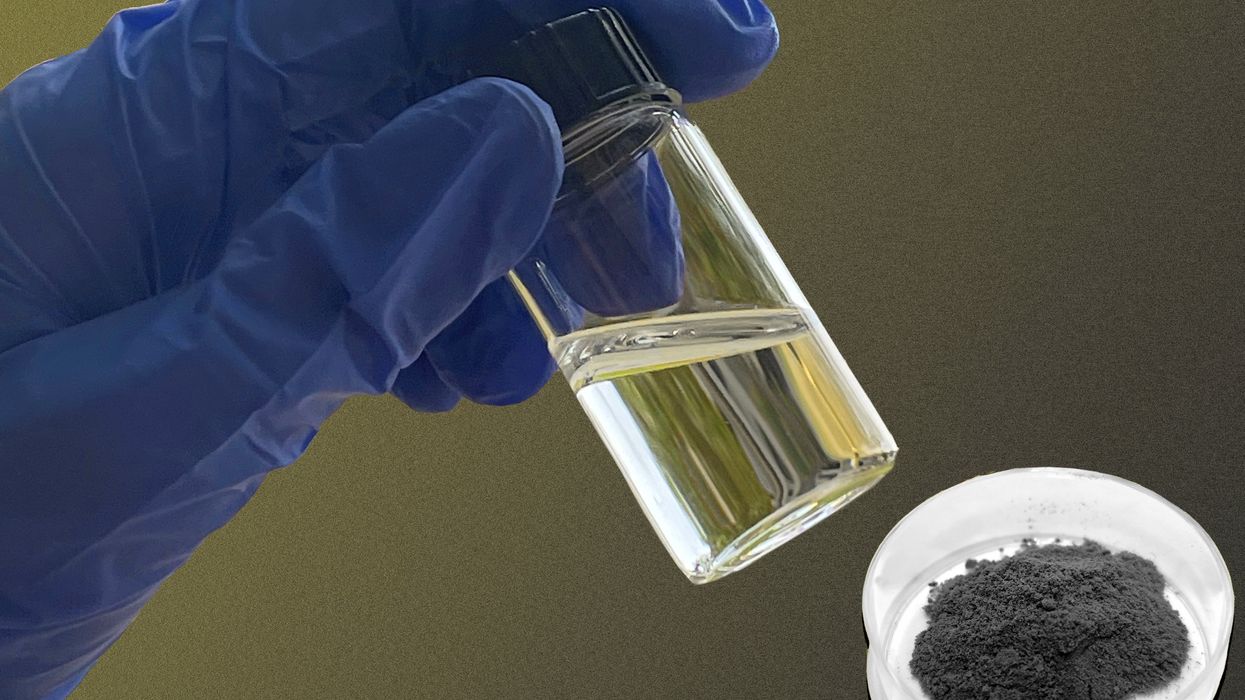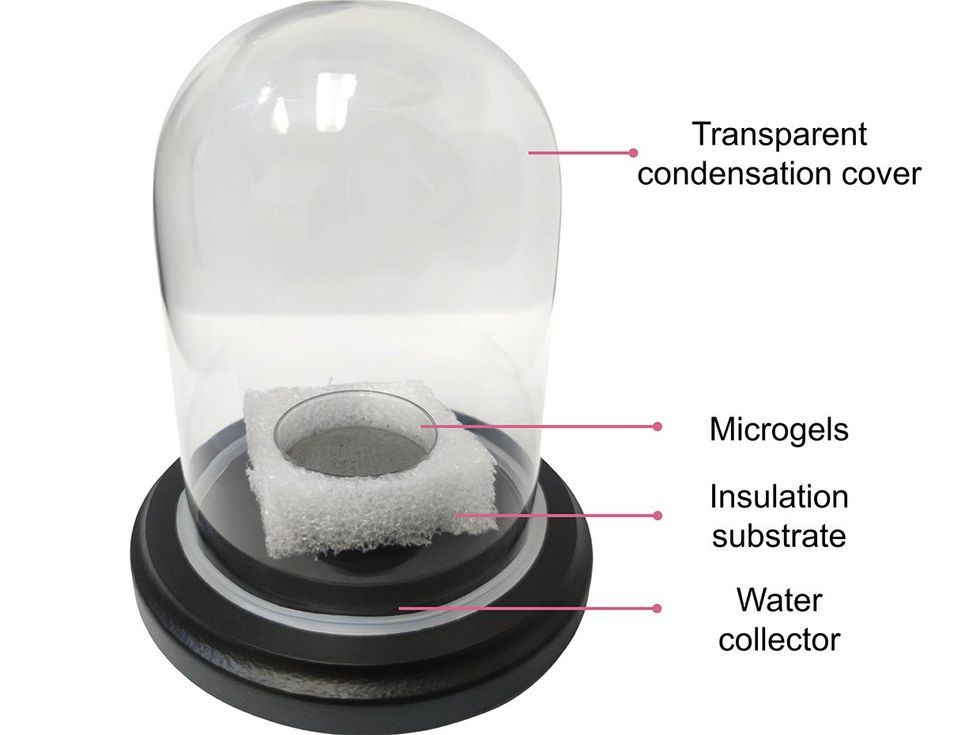A New Energy-Efficient Hydrogel Pulls Water From Air

Using a new kind of hydrogel material, researchers at the University of Texas at Austin have pulled water out of thin air at temperatures low enough to be achieved with sunlight.
Atmospheric water harvesting draws water from humidity in the air. If the humidity levels are high enough, a system can pass fog through a mesh or cool the air below the dew point to condense the moisture and collect liquid water. But in low-humidity conditions and arid areas, water vapor has to be extracted directly from the air as a gas.
The UT Austin technique is aimed at the latter. It has two key steps, first acting like a dehumidifier to collect the water, then releasing it for use. Other researchers have looked into similar methods for absorbing water vapor using material such as silicas and metal organic frameworks, which have their own pros and cons," says Guihua Yu, a professor of engineering at UT Austin who led the research, published 11 September in Proceedings of the National Academies of Science.
 The prototype device developed at UT Austin relies on a new hydrogel to efficiently pull water from the air and, more importantly, release it more efficiently than other hydrogels.The University of Texas at Austin
The prototype device developed at UT Austin relies on a new hydrogel to efficiently pull water from the air and, more importantly, release it more efficiently than other hydrogels.The University of Texas at Austin
Many of the materials used to pull humidity from air come with one particular con: If the substance absorbs water easily, it also requires a significant amount of energy to release that water later. Yu's team has developed a new synthetic material to potentially address this key complication. The material is a hydrogel, a polymer network that naturally retains a lot of water. But the new material requires less energy to release that water than other hydrogels, making it possible for the system to operate with sunlight as the sole energy source.
How Atmospheric Water Harvesting WorksThe new hydrogel is more efficient in its uptake and release of water thanks to its structure, which pairs two distinct segments: a network of sites that absorb and store water and thermoreactive segments that help to release liquid water.
On the absorption side, the advantage comes from immobilizing salt ions in the polymer structure. Conventional hydrogels are like bulky Jell-O" laced with salt ions that help draw in and liquefy the vapor. However, they risk leaking those salts each time they release water and may become limited in how much they are able to absorb, Yu says. By fixing the salt ions in place, this new hydrogel confines areas of absorption to avoid these issues.
The gel's thermoreactive nature, meanwhile, is key for releasing the stored water. When the material is heated above a threshold temperature, it transitions from retaining water to expelling it. By interspersing thermoreactive segments among smaller areas of absorption, this material releases water at a relatively low temperature, achievable with solar energy alone. The hydrogel can release more than 80 percent of absorbed water in about 20 minutes at a temperature of 40 C-hot, but not uncommon in desert environments. In Phoenix, for example, high temperatures average about 41 C during the month of July.
Other water-harvesting devices currently available, like those from Source and Watergen, are primarily intended for use in moderate conditions, Yu says. But Yu and his colleagues at UT Austin developed theirs with arid atmospheres in mind. It follows earlier research funded by the U.S. Department of Defense's Defense Advanced Research Projects Agency (DARPA), which aimed to help provide drinking water for soldiers stationed in desert conditions.
While the ultimate goal of the technology is its use in desert areas, the project is still focused on the fundamental science, rather than practical concerns such as cost. Hydrogels vary in cost, depending on the materials, and Yu hopes to begin developing less expensive, more scalable versions of the technology soon.
Of the techniques currently in development, other water harvesting technologies are likely closer to commercial applications, according to Chiara Neto, a professor of physical chemistry at the University of Sydney. Yu's research provides guidance on how to increase efficiency of the water capture process," Neto says. However, its fundamental nature means that practical considerations are not necessarily at the forefront."
Despite the work still needed, this is an important step toward real-world application," says Lenan Zhang, a research scientist at MIT who also studies methods for extracting atmospheric water vapor. Acting as a proof of concept, Zhang says, this fundamental science provides the upstream innovation" needed to help provide the world with access to clean water.